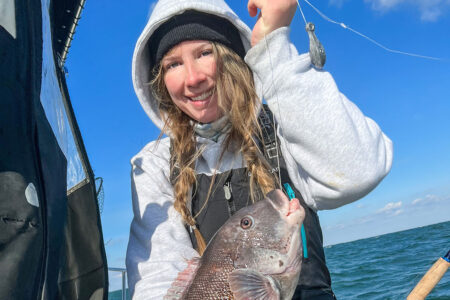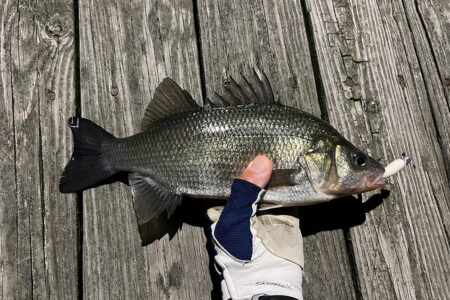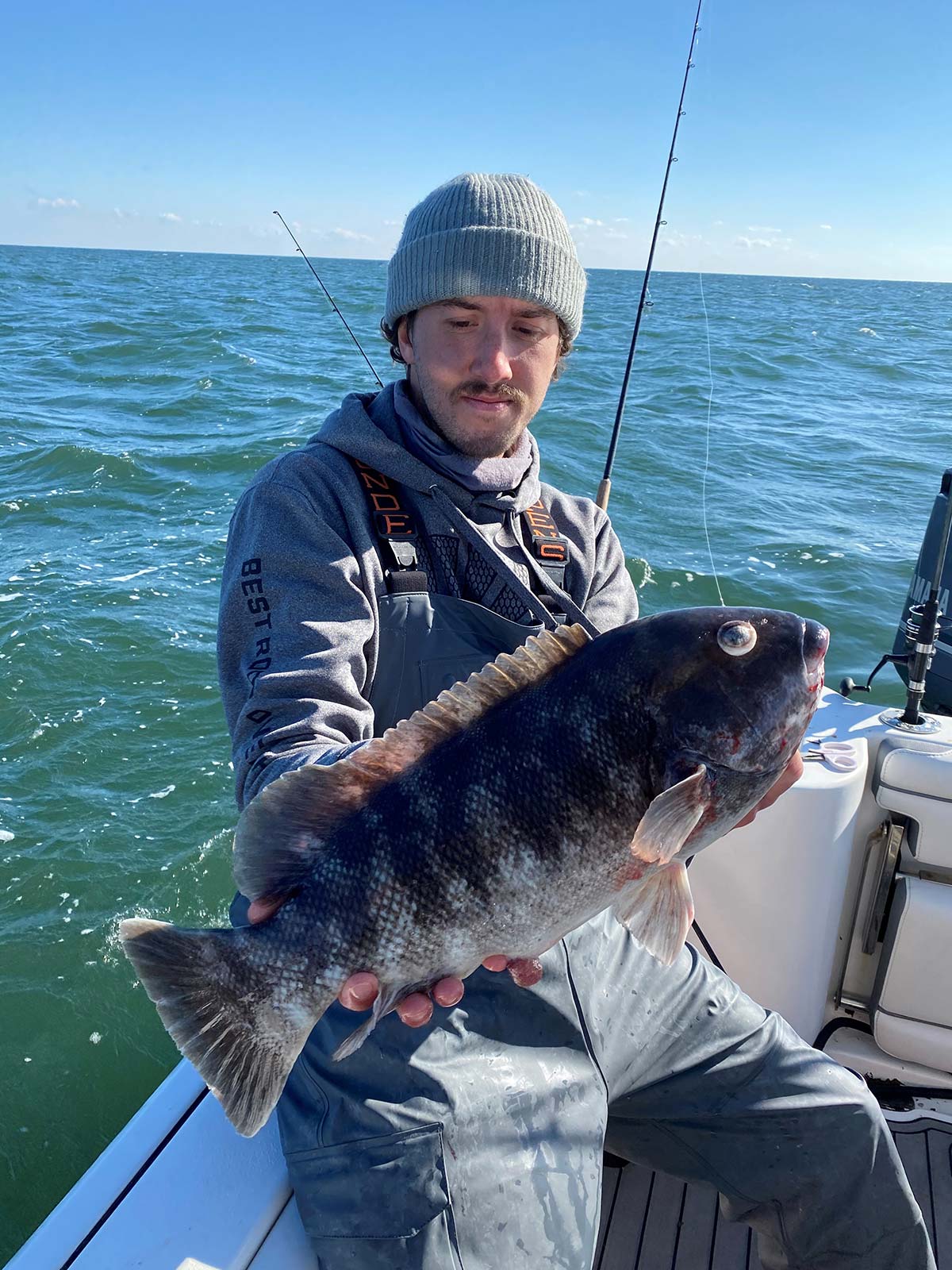
A steady producer into the later portion of the LI Sound tog season.
Each fall it’s amazing the difference between blackfishing along the South Shore and North Shore. October and much of November sees great blackfishing along many of the reefs and rocky lairs along both sides of the Sound. However as Thanksgiving rolls around and we crawl into December, the water temperatures drop below 50 degrees and the tog become pale white, indicating most will go into hibernation until the spring, while much of the South Shore reefs and much of the deepwater wrecks and rockpiles such as Fire Island Reef, Cholera Banks and Southwest Ledge are just getting started, particularly with big tog. As for the North Shore at the end of November and into December, all is not lost as the Stratford Shoals — better known as the Middle Grounds, is a tog producer into December. Don’t pull the plug just yet as there are some fresh Christmas Eve fillets to be caught.
A Structure-Reliant Species
Blackfish have always been and shall always stay a structure orientated species. Rocks, sunken ships, natural or artificial reefs are where you find most blackfish living year round along both shores of Long Island. The Middle Ground consists mostly of rocks from 15 to 60-feet of water east and north of the lighthouse with the best action from mid-October to late November or early December in the 55 to 60-foot depths during the late season. There are many rocky ledges that are tailor-made for solid tog fishing, particularly during an ebb along the eastern ledge. Blackfish usually come out of their cubby holes during an outgoing tide and ply the rocks for a meal which consists mainly of crustaceans, crabs and mollusk. The outgoing provides the best fishing late in the season at the Middle Grounds due to the warm water coming from the extreme western Sound which is a few degrees warmer than the water coming from the east during incoming water which is primarily cooler coming from Block Island Sound. During the winter, blackfish become dormant and will move off to the rocky lairs between 140 and 150 feet of water hibernating until the warm days of spring raise water temperatures back to 50 degrees. During the late spring, blackfish will move to shallow sandy bottom in order to spawn and then head back to their havens.
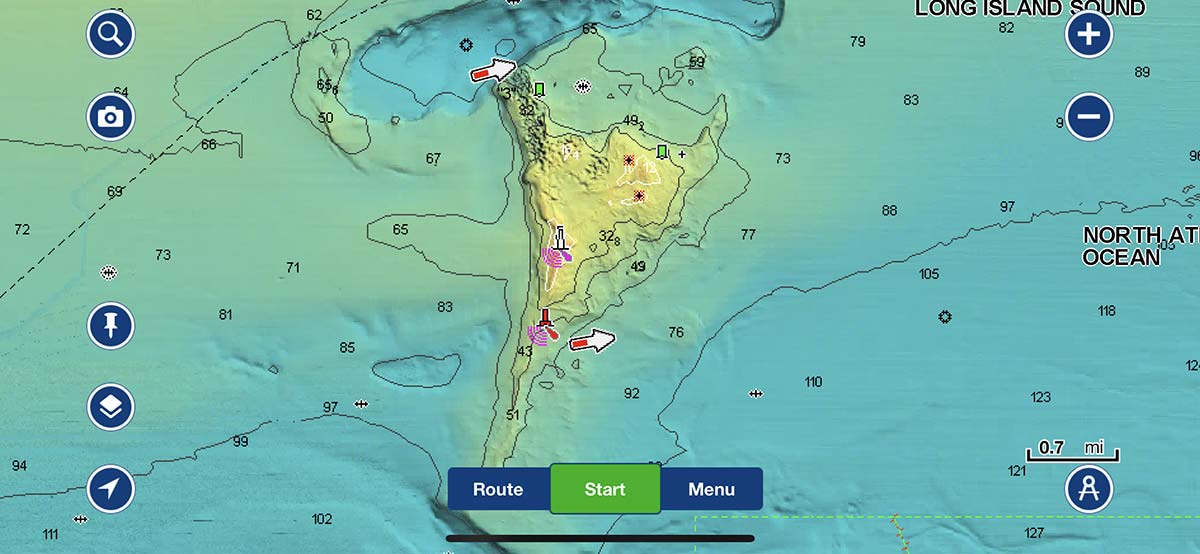
Don’t Leave Home Without Them
Regardless of the type of structure you seek to fish, having the proper gear onboard is an absolute must. The first place to start is a quality and accurate map. The Captain Segull Sportfishing Chart for the Western and Eastern Sound is ideal as not only is it good for charting but it is also loaded with marked off hot spots. Second is a bottom recorder since it will paint the picture of the structure that lies below.
Once a favorable piece has been found, having a GPS would be a big help as you can MOB strong potential pieces then determine how you will set up for anchoring, judging by the speed of the wind and current. A GPS can tell how much rope is needed to set up with. Be sure to have at least a 10-foot chain linked to the anchor and at least 300 feet of scope .An additional anchor onboard will lock in some peace of mind should the first one succumb to the merciless bits of structure. My gear includes two Danforth anchors with 500-feet of half-inch scope on each. A 10-foot chain of 5/16 will grab the bottom quickly and prevent the anchor from dragging into rocky grounds. Remember to never set the anchor on the rocks or you may never see it again. If you are not sure how to anchor on a sandy piece of bottom and work the rope into the rocks, then a bendable grappling hook may be better for you as you can retrieve it back under the power of the engine. If you do go to the grapple, be sure to add the 10-foot chain to it, otherwise the grappling hook may catch and slip several times, drifting you off a prime piece of bottom.
Lastly, an anchor ball will make lifting the chain and anchor a lot easier. These tools are paramount if you want a stress-free day at the Middle Grounds and the key to honing in on the action.
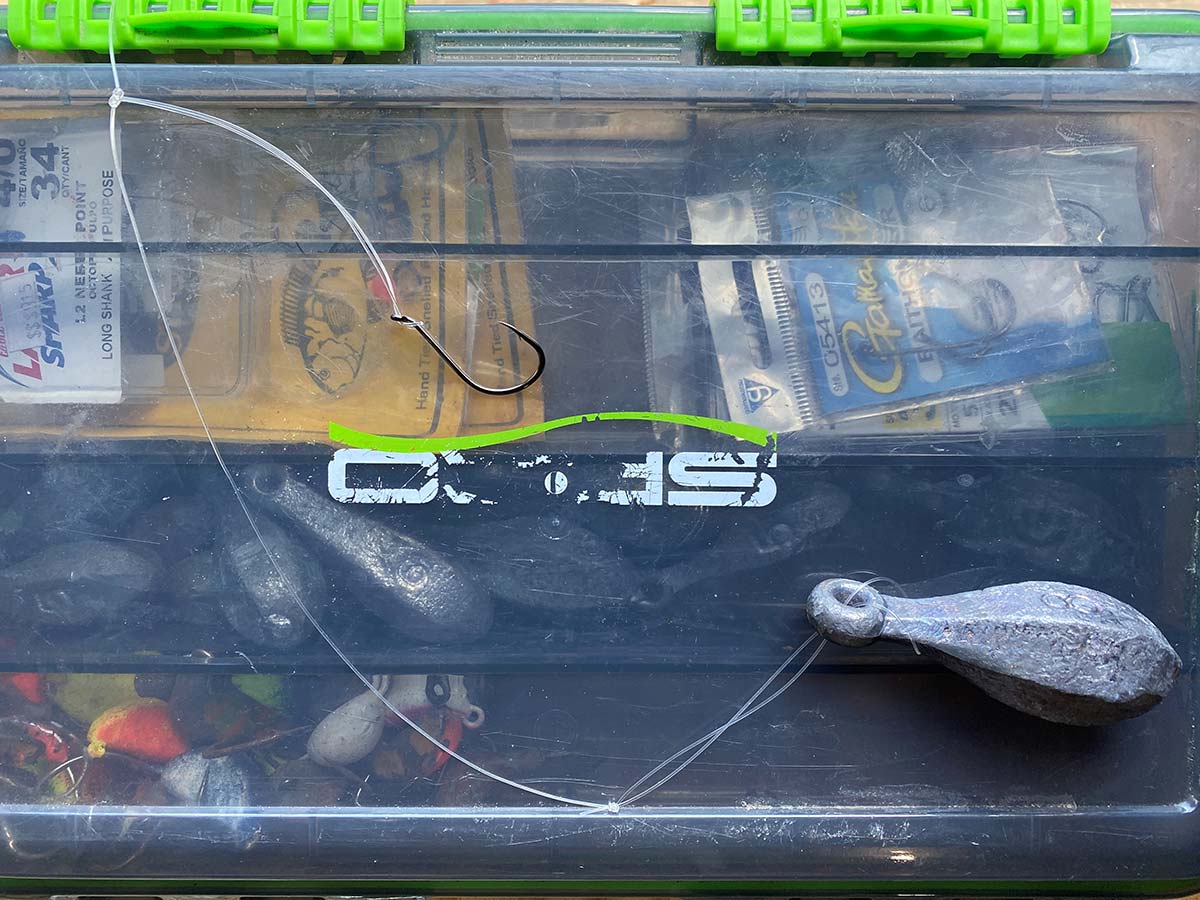
Well-Suited Tackle
When fishing on the rocks or any area of structure for that fact, your best results will come from rods with fast taper tips for sensitivity, and powerful butt tapers for the lift needed to haul any outsize tog from the wonderland of the Middle Ground. My favorite combo which suits the situation perfectly is the 7-foot Lamiglas TFX7020CT Tri Flex Series. The exclusive graphite/fiberglass construction of this stick gives me all the sensitivity and power I need to challenge the toughest of bottom dwellers. I match the rods perfectly with the Daiwa SL-X30SHA Sealine conventional reel with the power and speed at a 6 to 1 ratio to get the fish off the structure before they have a chance to realize they have been had. PowerPro 30-pound braid completes the combos as this form of braided synthetic is sensitive to the slightest touch.
Fit For The Occasion
Blackfish are in a league of their own and quite simply a tog rig consisting of a Gamakatsu 3/0 Octopus hook connected to a dropper loop of a 40-pound fluorocarbon leader approximately 6 to 12 inches above the sinker is all that is needed to slam toggies. As the tide slackens or during incoming tide bring the hook 6 inches above the sinker whereas during outgoing tide, raise the hook to 12 inches while the blackfish are out of their crevices and searching for food. These hooks are super sharp, strong and the short shanks are easy to bury in crab baits without the concerns of the tog dropping the bait as with many other style hooks. Keep the rigs to a single hook. It’s much easier to deal with one hook than two especially when the big females are around. Besides, there will be far less hang ups and spin on the rig which becomes more appealing to the tog.
Sinkers round out the terminal end. Bring along a good assortment of bank sinkers between 4 and 12 ounces as well as plenty of extra hooks and fluorocarbon leader since surrendering some terminal tackle is inevitable to the sticky bottom. This will cover you for many of the conditions you may encounter at the reefs.
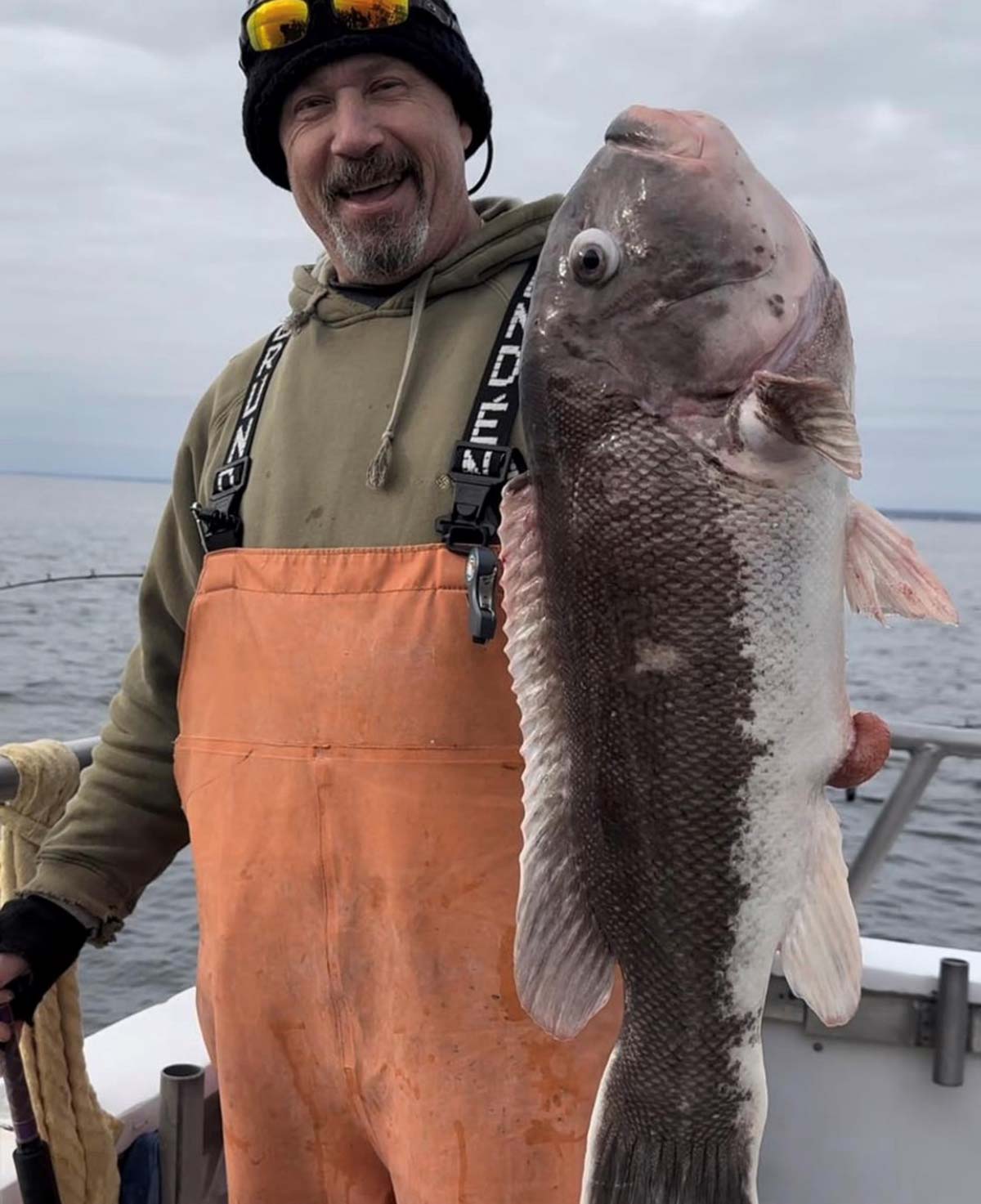
Breakfast, Lunch And Supper
The togs menu can be quite selective in this day and age. While green crabs are still necessary to have on board, white crabs have been responsible for some giant tog. Asian crabs have their days, however, for the most part; Asian crabs work best when the water is warmer during October. Green crabs, though reliable, have seen days when they weren’t touched while white crabs are crushed by the tog. My first choice is whites followed by greens. Hermit crabs also have their times, but for the price and the time of year, you may be tossing a lot of expensive crab overboard since it is the late season. However if you have some saved in a trap alongside your boat, by all means bring them along as they should work just fine. Clams and fiddler crabs round out the choices; however, they do a great job of catching small tog and cunners. For this reason, I rarely, if ever, have them aboard and choices for bait. If you seriously want to tangle with big fish, go with the white crabs. Try using the smaller ones whole and cracking the shell to get the juices excreting to entice the bite on the larger white chins.
| SMACK IN THE MIDDLE |
| This spot sits midway between Long Island and Connecticut. The Middle Ground is an area approximately three miles in radius, surrounding a high spot that is exposed at low tide, and officially known as Stratford Shoal. There is a lighthouse sitting on the shoal that makes it easy to locate from a distance. The shoal is located six miles north of Pt. Jefferson Harbor. The Stratford (Middle Ground) Shoal (41 03 06N / 73 06 01W) consists of a variety of bottom contours creating all sorts of rip lines and drop-offs anywhere from 15 to 65 feet of water, making it an oasis for blackfish as plenty of big toothy critters are taken by sinker bouncers, with some double-digit fish in the mix. |
Spend the extra few bucks and pick up a half-bushel of hermits and half-bushel of whites. Both baits work best whole but when rigging the whites, make sure to crack the shell just a bit to entice their appetite and get them chewing.
The grounds mentioned in this article can be quite productive into the late season but also keep in mind, especially during these colder months, the waters surrounding can become turbulent rather fast which could be trouble in itself. Mix in cold water and you really should use caution when fishing this place. Choose your days wisely and don’t take chances at all. Also have the proper safety gear in place at all times in case an emergency takes place. Stay safe and happy fishing.

